Smartrawl’s combination of artificial intelligence and selective gate hardware enables fishers to reduce bycatch and improve sustainability and profitability
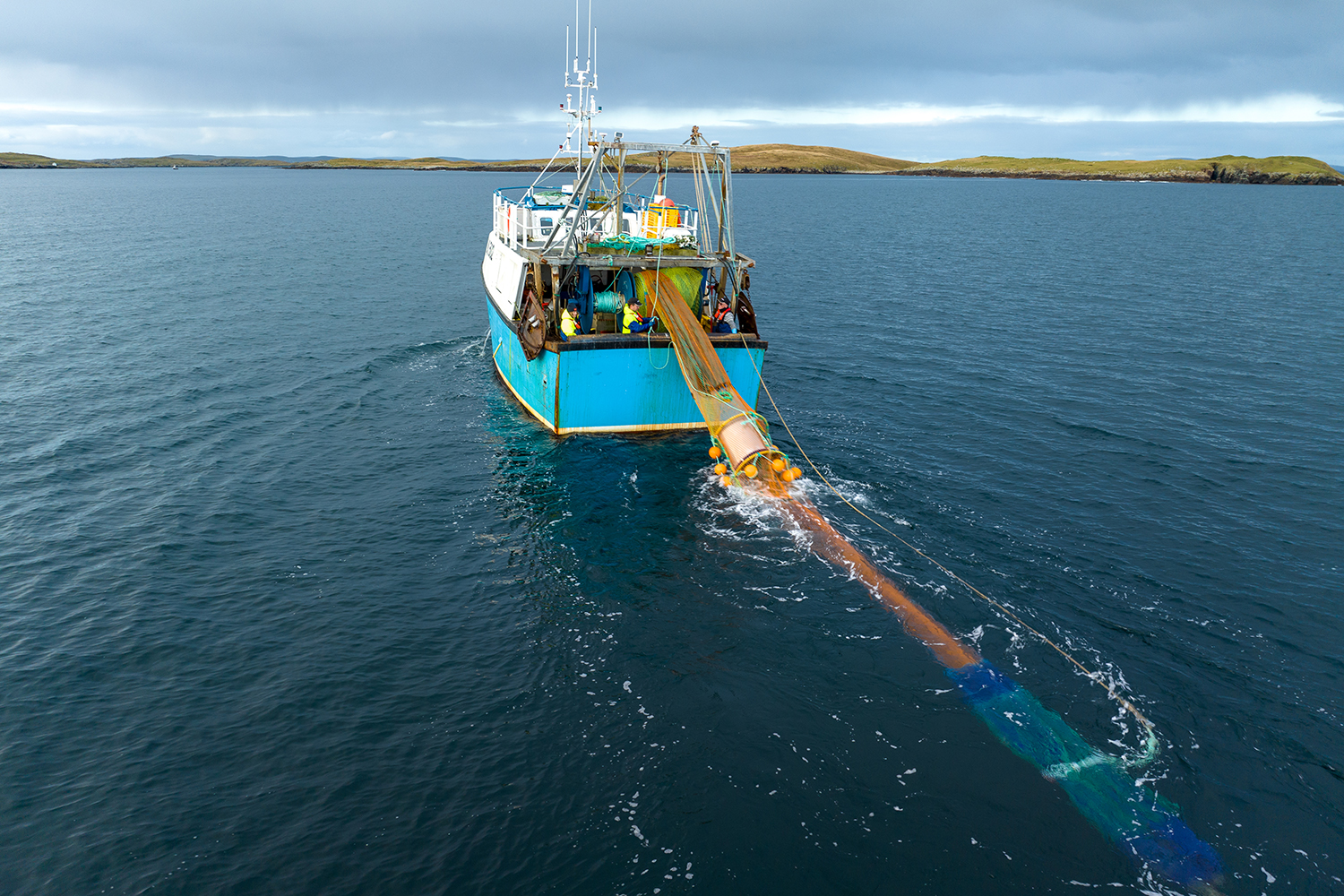
When trawling, commercial fishers drag nets through the water, sweeping up the fish they want along other animals they are not targeting. Known as bycatch, and often discarded at sea, it can include other species of fish, marine mammals, rays and even fish of the right species that are too young. Bottom trawling has an average bycatch rate of 31 to 55 percent, and is highly dependent on gear type, target species and individual fisheries, according to Sustainable Fisheries UW.
After years of research and development, there’s now a solution to this problem that will soon undergo field trials. Dubbed Smartrawl, it promises to allow fishers to retrofit their bottom trawl nets so that they catch fish they select by species and size and everything else swims free.
The funding for the project comes from government grants and members of Fisheries Innovation & Sustainability (FIS). The non-profit drives strategic innovation for the UK seafood industry.
“Our funders and partners are committed to Smartrawl as a practical and highly innovative solution to the problem of bycatch and discarding, and helping fishers meet customer requirements for selective, sustainable fishing,” Kara Brydson, executive director of FIS, told the Advocate.
Smartrawl consists of three main components: a stereo camera, a rotating gate and an artificial intelligence (AI)-enabled computer, according to project lead Rosie Ashworth. A research assistant at Heriot Watt University, she reports to Smartrawl’s inventor, Professor Paul Fernandes. (Editor’s note: Brydson and Fernandes are each presenting at the Responsible Seafood Summit in St Andrews, Scotland, in October.)
These components sit in the extension section just before the end of a bottom trawl net. As animals travel down the net, the camera captures their image to identify the animal’s species and assess its size. The pictures have to be clear enough to be useful, a challenge because the imaging is underwater and must be reliable even in the presence of sediment or other factors that degrade picture quality. After working with the lighting and other aspects of the camera, the research and development team devised a solution that enabled reliable species detection, Ashworth noted.
Artificial intelligence is already helping improve fisheries, but the trick is in training the tech
The second Smartrawl element is a rotating gate. In one configuration, the gate directs fish, stingrays or whatever is traveling down the net to the side and through panels that are open to the sea. The flow of water pushes the animal out of the net.
In the other configuration, the gate rotates 90 degrees, changing what happens to fish traveling down the net. “The two doors slide around, and they close off the escape panels,” Ashworth said.
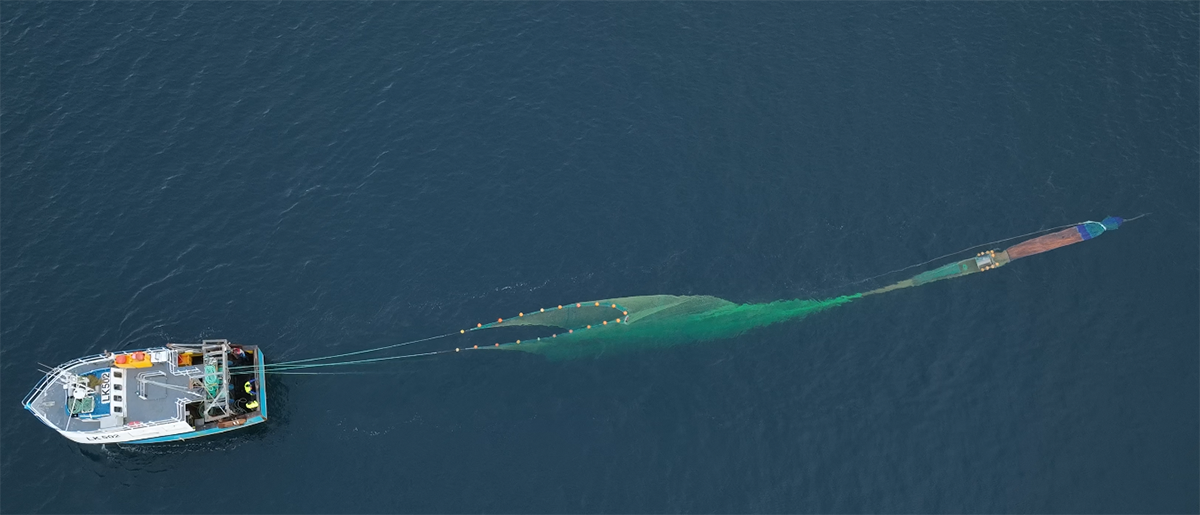
The fish, as a result, flow into the end of the net. They join any other catch already present.
The gate, which is patented, doesn’t need much power to operate. The flow of water is enough to rotate it as needed, with a latch holding it in place.
The final Smartrawl component is an artificial intelligence (AI)-enabled computer that looks at the camera images and classifies what it sees as to species and size. If the software decides what fish is going by meets specifications, it commands the gate to move into the catch position. If what is in the net should be free, as determined by AI algorithms, then the software tells the gate to move to the release location.
Ashworth said that tests showed the system can take a picture and rotate the gate every half second. Thus, Smartrawl can handle passage rates up to 100 fish per minute. The R&D team analyzed fish passage rates during a tow, finding in field work that it varied from almost none up to 94 fish per minute.
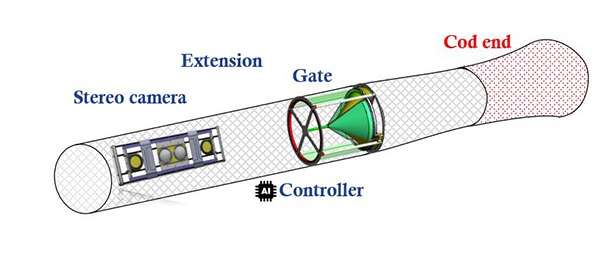
The research team has evaluated the components individually and proven they work. The researchers are now checking the operation of the entire system.
“That’s what we’re planning on doing, testing the whole thing,” Ashworth said.
Beyond that system testing lie field trials. These will compare how well the new technology does against traditional trawling for such metrics as bycatch and overall performance.
In addition to reducing bycatch, another benefit of Smartrawl is that it could help fishers who operate in areas with catch limits, such as only being allowed to take out a certain tonnage, thereby reducing discards at sea. The system could help ensure that a fishing operation meets its regulatory limits.
The technology currently targets a handful of species important in waters near the UK. It can be adapted to other areas, though, by training the AI classification algorithms for the species of interest in each area.
Assuming the testing is successful, the next step will be to get the technology in the hands of fishers so that they can better meet regulatory and market demands. Smartrawl’s intellectual property and patent is held by FIS members. However, FIS itself is a nonprofit, and this progression from R&D to commercialization is new terrain for it, according to Brydson. She said the organization is looking forward to working with others on a route to market for Smartrawl.
“We’re considering options to ensure that the system can be accessible as quickly as possible and affordable to fishers,” she said. “A great idea is only great when it’s adopted by those fishers who can actually make a difference.”
Now that you've reached the end of the article ...
… please consider supporting GSA’s mission to advance responsible seafood practices through education, advocacy and third-party assurances. The Advocate aims to document the evolution of responsible seafood practices and share the expansive knowledge of our vast network of contributors.
By becoming a Global Seafood Alliance member, you’re ensuring that all of the pre-competitive work we do through member benefits, resources and events can continue. Individual membership costs just $50 a year.
Not a GSA member? Join us.
Author
-

Hank Hogan
Hank Hogan is a freelance writer based in California who covers science and technology. His work has appeared in publications ranging from Boy’s Life to New Scientist.
Tagged With
Related Posts
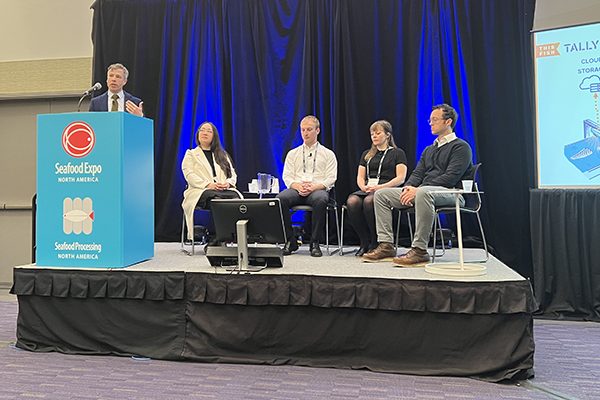
Intelligence
AI is becoming an ‘integral part’ of fisheries management and seafood processing
Artificial intelligence (AI) is playing a larger role in seafood, as data is at the heart of the so-called fourth industrial revolution.
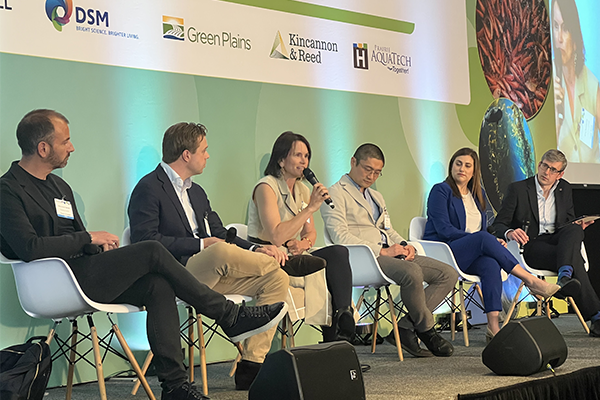
Innovation & Investment
‘We have 15 years to fix this planet’: Blue Food Innovation Summit explores potential of restorative aquaculture – and the challenges to scaling
At the Blue Food Innovation Summit, discussions centered on restorative aquaculture’s potential and financing the ocean’s capabilities.
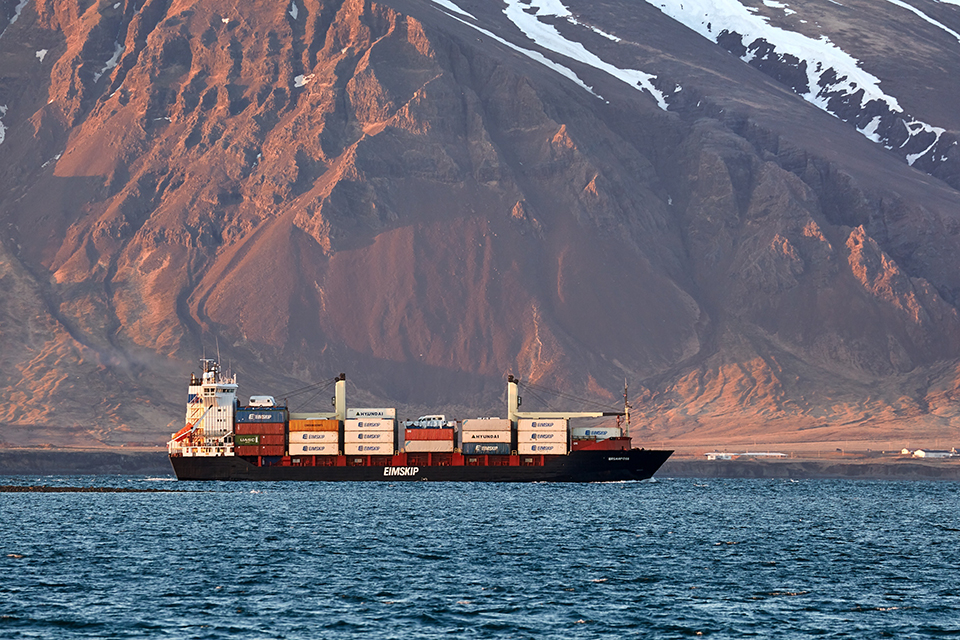
Responsibility
‘They thought we were crazy’: Behind one Faroe Island salmon farmer’s bold stance to reduce its carbon emissions
Hiddenfjord executive’s insistence that “fish should never fly” flies in the face of industry norm. This Faroe Island salmon company intends to do things greener.
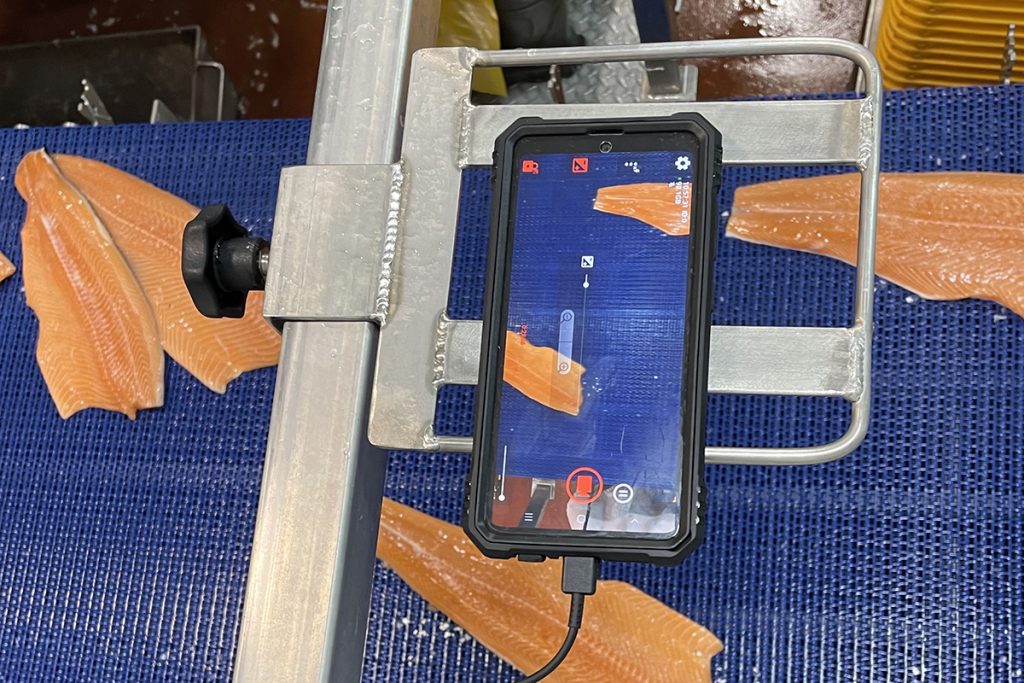
Fisheries
Make seafood production and processing more responsive and responsible? Sounds like a job for AI
Environmental reporting and quality control are two additional areas in which artificial intelligence can boost seafood producers' performance.


